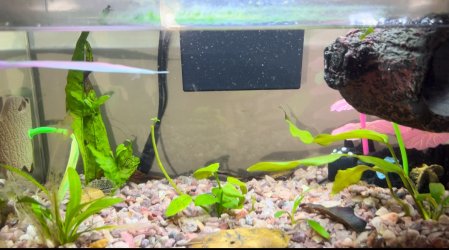Don't replace the gravel, just use a small gravel vac to give it a decent clean as you do water changes. Do you usually use a gravel vac/syphon on the tank? Gunk and mulm does accumulate in gravel, which isn't always a bad thing, sometimes the micro critters are just clean up crew and provide free fish food for tiny fish, and an overabundance of them in a tank where you don't want them (they're too small for a betta to eat them all when it's easier just to eat what you give him).
However, if you don't usually gravel vac or clean the gravel, don't go stirring it up yet, I can link you to a video on how to properly gravel vac deep into the gravel a bit a time, so you gradually reduce the muck and mulm, without stirring it all up at once and throwing it all into the water column and filter - that can cause problems. Better to gradually clean the surface area with a vac, then next water change do a deeper clean in one area at a time, since some nasty things can also thrive and accumulate in dirty gravel.
Water changes won't affect your cycle, don't worry. The nitrifying bacteria that process the fish waste are pretty hardy, and they don't live in the water column - they attach themselves to surfaces, and pretty firmly, with a protective sort of shield over them. That's one part of why we have filters, those bacteria colonise all over and in the sponges and any other filter media you use like ceramics or cartridges.
They also attach to the glass, and the substrate - the gravel will be hosting a good amount of the nitrifying bacteria in your tank after a year and a half, and don't forget that live plants take up ammonia, and faster than the bacteria can process it into nitrites and then nitrates, so your plants will be helping too.
Don't think in terms of eliminating the micro critters, unlikely to be lice or anything dangerous, most likely seed shrimp or daphnia, or something else harmless that's just overpopulated, and will be reduced with increased, methodical gravel cleaning and water changes. Rinse the filter media in removed tank water, not under the tap, since chlorine kills bacteria, and that would knock your cycle back a bit, and removing the gravel and replacing it with something else would definitely mean throwing away a good chunk of the nitrifying bacteria in your tank and potentially cause an ammonia spike.
Sorry for ramble, I'm tired and never good at being concise! Do you have a gravel vac? What's your usual tank cleaning routine?








